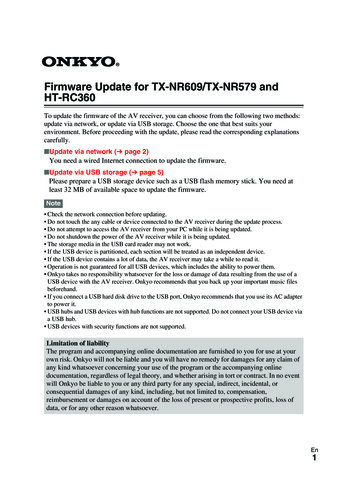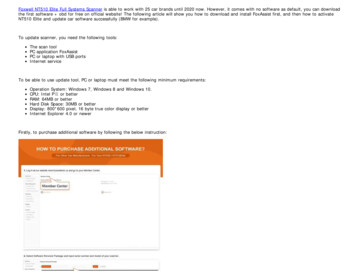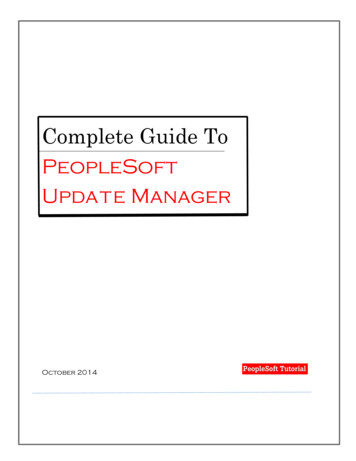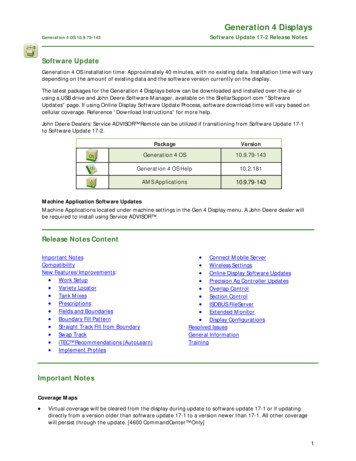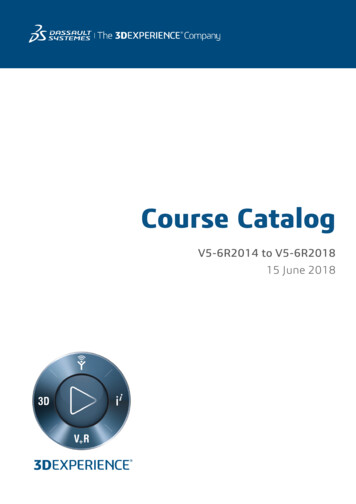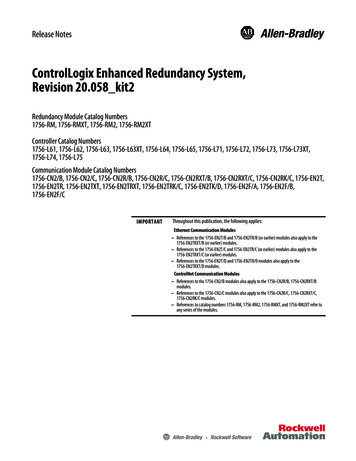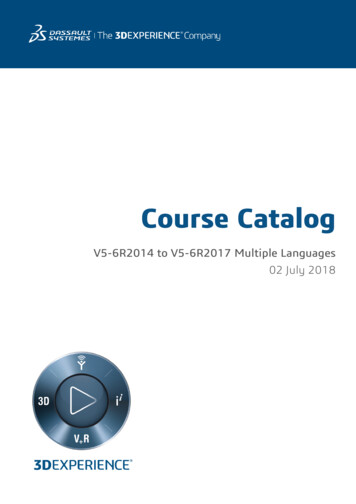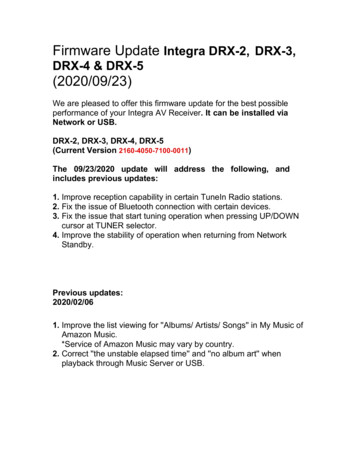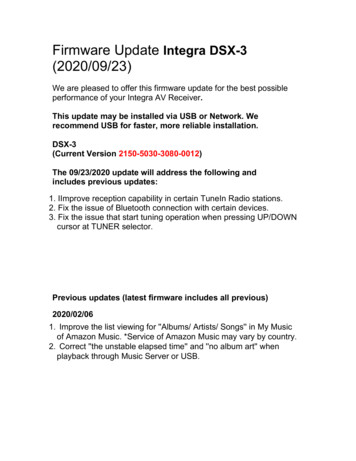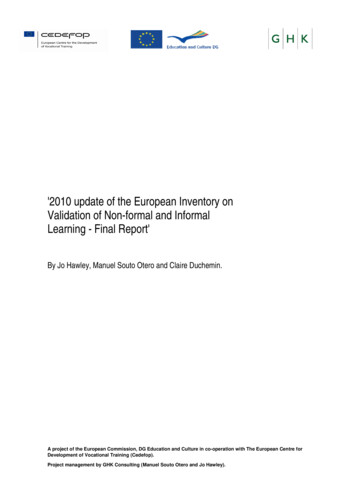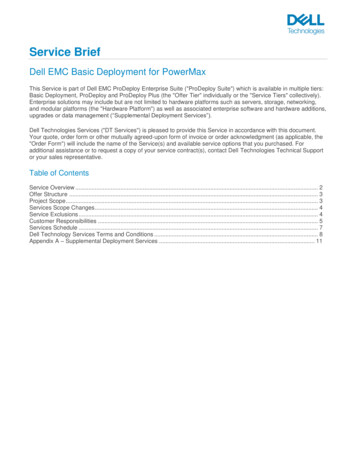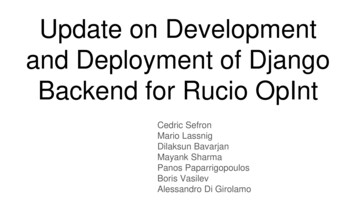
Transcription
Update on Developmentand Deployment of DjangoBackend for Rucio OpIntCedric SefronMario LassnigDilaksun BavarjanMayank SharmaPanos PaparrigopoulosBoris VasilevAlessandro Di Girolamo
Rucio OpInt: what are we talking about Data Management Operations In ATLAS during the past several years there are at least 3 FullTimeEquivalent (FTE) dedicated toDDM Ops. .Plus several shifters monitoring the distributed computing infrastructure and ticketing sites incase of obvious failures.We know a lot can be automated. What we want to do: Details in 10th June Dilaksun and Cedric work in https://indico.cern.ch/event/818950/ and lastmonth tech discussion https://indico.cern.ch/event/838714/Basic idea: take the FTS (asynchronous transfers) success and errors, categorize them, findcorrelation, provide "suggestions" to "someone" on what to do. Tool in place, send mattermost messages on sites failing w/o GGUS ticket already open, i.e.suggest shifters to submit ticket. Feedback on action taken yet to be recorded (learning)If we build the "right" system, we have tremendous possibilities of improvements: E.g. extending to job errors
Moving to DjangoLast discussion: gTZKLr-OiVj8vxRy-uYhcpwNdJOV0/editOut of the box functionality: Django admin Django is designed to protect against common threats such as XSS attacksand code injections. Django ORM requires zero config to begin, easy to manage migrations, dbqueries etc.Django-REST-framework provides easy way to build a REST API which is exactlywhat we need.
Current OpenShift OpenStack DeploymentURL: http://rucio-opint.web.cern.ch/OpenStackrucio loader cron : to fetch logs from influxdb/elasticsearch and update theproduction database.OpenShiftDjango backend ported by Panos that reads the production database and exposesit to the frontend.
Issues with Current DeploymentSensitive information was available in a Git private repo (DB keys, ElasticSearchAPI KEY)Cron for fetching monitoring logs did not run inside OpenShift Pods.Pods run Django’s development server. WSGI applications are recommended to be run in production. Gunicorn enables to do that.Our custom entrypoint did not run in production. Manual steps were needed toreproduce the expected state of the pods.
Long term maintainability GoalsDevelopment environment1. Having an easy to setup development environment to make theinvolvement of more developers to the project easier.2. Provide a postgres db backend locally and populate it with a sample ofreal data.Deployment/ Operational Overhead1. Minimizing operational work to make maintainability easier.2. Easily reproducible deployment. If needed can be migrated easily toanother platform.3. Connect to backend to the DB on Demand production db easily
Deployment AlternativesOpenStack IaaS Nginx Gunicorn Django- Deploying to OpenStack will require us to build a VM and configure a lotof things ourselves (firewalld, load-balancing etc.).- Requires people to be involved to maintain the servers if and whenthings go wrong.OpenShift PaaS Gunicorn Django- OpenShift uses Kubernetes inside which means we don’t have to worryabout the load-balancing.- Easy to maintain development and production environment. Just write 2Dockerfiles.
Last few weeks.Resolve issues with current deployment.Implement the long term maintainability goals.OpenShift was picked as the deployment platform.Get comfortable with Okd ( OpenShift’s community distribution for Kubernetes)
Analysis of Current DeploymentDockerfile: sets up Django, requirements, mounts code directoryEntrypoint: makes migrations, set environment variables, configuring and startingcronThe Dockerfile and entrypoint we created in our Git repository were ignored inOpenShift deployment. The python template available in the OpenShift console uses its ownDockerfile(Builder image) and entrypoint script (also called s2i scripts) whichtakes care of running management commands for collecting static files,making migrations and starting the server.
The SolutionURL: http://oc-opint-test.web.cern.ch/Public Git repo independent of secrets: dSetting up Dev Environment: Clone the repositorydocker-compose up --build (sets up django and postgres containers)Pushing code to Production: Push code to production branch (at present, it is master. I’ll change it after the meeting)Setting up Okd takes care of making all secrets available to the containers and connecting to the production db.Cron inside containers: The containers use supercronic: https://github.com/aptible/supercronic
OpenShift Pipeline
Current OpenShift PipelineGeneration of images for application containersBuilder Images(Okd template) Source Code (GitHub) Image for container tobe deployedCustomization Options Assemble script: Executed by OpenShift’s s2i tool to inject customconfiguration while building an image for the containers to be deployedfor a project Run script: Executed by OpenShift when starting the containers
OpenShift PipelineCustom builderimage withcustom scriptsfor assembleand runoperations
Current OpenShift PipelineURL: http://oc-opint-test.web.cern.ch/Custom Builder Image: st/blob/master/DockerfileCustom Template: st/blob/master/mytemplate.ymlAssemble: st/blob/master/s2i/bin/assembleRun: st/blob/master/s2i/bin/run
What’s left? Need to update Readme.md for developers. Add a production branch for the Git repo for django backend Update thewebhook in Okd. Add Instructions for initial deployment using s2i and command line. Parameterize the template for Okd so custom deployments can be made byanyone. Rollout this repository to the current production deployment. Incorporate the frontend in the same Okd project as the backend
Questions?
Django admin Django is designed to protect against common threats such as XSS attacks and code injections. Django ORM requires zero config to begin, easy to manage migrations, db queries etc. Django-REST-framework provides ea

